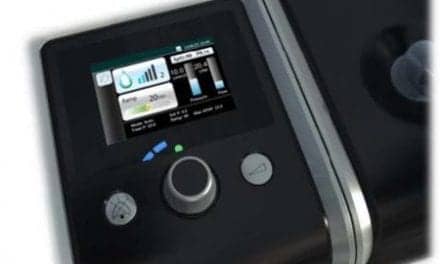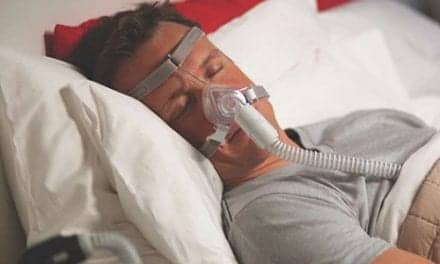RT Magazine examines how the novel coronavirus has affected airway clearance practices, both in the hospital and in home care settings, by speaking with industry experts from Hayek Medical.
Airway clearance therapy is an important tool in preventing lung infections in chronic lung patients. In the era of COVID-19, it’s become all the more important to keep COPD and cystic fibrosis sufferers out of hospitals, and therapy ACT adherence is a key component in limiting these hospitalizations. This month, RT spoke with Gary Mefford, RRT, of Hayek Medical, about some innovations in current ACT, the impact of COVID-19 on therapy adherence, and projections about ACT moving forward.
RT: Can you talk about the importance of proper secretion suction and airway clearance therapy for patients with chronic lung diseases? How is technology evolving to reduce costs and maximize outcomes?

For patients with chronic lung disease, complete clearance of the airways is the goal. A goal that can feel like it’s beyond reach even with multiple airway clearance therapies and constant suctioning. Why? Even careful suctioning of the airway for the extraction of pulmonary secretions can cause mucosal trauma, which potentially stimulates more secretion production. If the secretions can be brought out of the trachea and expectorated, that will always be superior to extraction. How can we achieve the most effective strategy? As complete alveolar to tracheal clearance is the goal, to achieve the greatest effectiveness, your strategy must address the spectrum.
Airway clearance therapy can be broken down into a spectrum of secretion modification through mobilization to expectoration. There are multiple interventions to affect some specific portion of or in some cases a range of this spectrum.
For example, humidification of the airway has a modifying effect by thinning the sputum. Oscillation devices may modify and help bring secretions up to the large airways or mobilize sputum. Insufflation/Exsufflation type devices facilitate mobilization and expectoration. There are many medications and devices that fill niches in the spectrum, but the Hayek RTX covers the full range. All of this is accomplished with the same device that can provide full ventilator support with a single footprint and interface for ventilation and secretion clearance. This results in a significant gain in efficiency of the therapy through effectiveness without requiring equipment and supplies for an alternative intervention that will cover less of the spectrum.
The secretion clearance mode on the RTX begins with an oscillatory waveform that is negative and positive over and under a zero pressure baseline, it modifies and mobilizes the secretions with no compromise to FRC. The extra-thoracic oscillatory waveform creates a very intense pressure wave intrathoracically, but is very comfortable for patients due to the padded cuirass interface. Subsequently, the timed Secretion Clearance setting switches to Cough, assisting in expectoration.
In addition, BCV can provide volume expansion with continuous negative for lung recruitment. BCV is a great tool for weaning as an alternative noninvasive support tool, but airway clearance is important to weaning as well.
As one of my mentors in long term care would always say, “You can’t wean junky lungs.” BCV offers an airway clearance option that will modify, mobilize, and aid expectoration of secretions unlike anything else available. It is noninvasive and comfortable for the patient, improving outcomes, and reducing the need for acute services and costs.
RT: Discuss your company’s most recent products and what makes them innovative.
The Hayek RTX has existed in its current configuration for several years since the sensing modes were added. It has a simple classic design and function focused on improving the patient’s cardiopulmonary performance. Our recent innovations have been mainly directed at creating better ways to assist our users with getting more from the RTX.
Early on, we recognized our device benefited hypoxemic respiratory failure patients in the past and how that could be a clear indication that it would help hypoxemic COVID-19 patients. Therefore, we developed a BCV algorithm specific to this emerging need. We have recently released a training series called “BCV Bootcamp”, an approximately one-hour training series that is designed to assist with providing a quick solid grounding in the basics of the application of the device to the patient. At the time of the release of this publication, Hayek Medical will be cutting the virtual ribbon on the Hayek Learning Academy. This will be an online learning portal where in-services can be accessed to help users gain a better understanding of the physiology and application of BCV on basic and advanced levels. Hayek will host multiple CRCEs available to learners 24/7. Also, we have developed our YouTube channel with many items that help inform on the subjects around BCV with testimonials and recorded interviews. As to the device itself, although unchanged in function for some time, if you haven’t used it for patient care, doing so will be transformative for you. If you seek to improve your ACT program with an innovative set of ACT strategies, BCV is the real innovative alternative.
RT: Can you talk specifically to your product options in the home care market and how the need to keep patients out of the hospital to reduce costs is driving product development, both at your company and in the industry?
Many products are being designed with a focus of being able to move even more critical patients into the home from the hospital when it is clear that it is appropriate and safe to reduce costs. With the ability to support noninvasively and provide HFCWO combined with cough flow assistance, the Hayek RTX was designed from its inception to be a tool that will facilitate pulmonary health even in chronically sick and challenged lungs.
There is good information that shows how BCV can be used toward improving tolerance of successful entry into pulmonary rehab by patients with even the lowest tolerance. In the paper, Exercise Training with Negative Pressure Ventilation Improves Exercise Capacity in Patients with Severe Restrictive Lung Disease: A Prospective Controlled Study Respiratory Research 2013, 14:22, the BCV group completed their program with significant measurable improvements while the control group was not able to complete the full program due to lack of tolerance. Many post-COVID-19 patients will benefit from pulmonary rehab activities. BCV could allow the weakest to begin their rehabilitation when they otherwise wouldn’t be able to tolerate it, support better results throughout the program, and help maintain them long-term. BCV offers many new strategies for keeping challenging, chronic cardiopulmonary patients from becoming a frequent readmission.
RT: Recent data points to increased ACT adherence among cystic fibrosis patients during the COVID-19 pandemic. What do you think may be driving this and can you confirm this with users of your technology?
We can certainly confirm that we encounter patients quite frequently, particularly post COVID-19 times, dealing with stable chronic respiratory illnesses who are terrified of becoming acute and having to access acute care. Many are highly aware that their risk of acquiring an additional infection is much greater inside the walls of a hospital or clinic. Hospitalization and all the risks and hardship for the patient and their support people seriously detracts from the quality of life. COVID-19 superimposed onto a chronic respiratory illness, such as CF, is terrifying. When you consider this, the motivation for adherence is strong.
RT: What role are integrated patient monitoring features playing in airway clearance therapy and how is ACT being integrated into the push for greater utilization of telemedicine? (especially during COVID)
ACT should be goal-directed. Multiple results collected from integrated monitoring tools will offer important means of validating therapy adherence and effectiveness to determine if goals are being met. Telemedicine, in many cases, can be a good alternative to a clinic visit for helping to manage the patient’s use of medications and devices prescribed for them while keeping them in safer environments.
RT: Can you talk about the future for airway clearance devices? In your opinion, what can respiratory therapists expect to see in the next 5 years?
Airway clearance is personal. For each individual, a program should be created that works for them. An ACT program should be patient centric, devised so that the patient can easily adhere with minimal assistance from others and minimal interruption of their pursuit of a normal quality life. One size doesn’t fit all!
The future is personal when it comes to ACTs and more alternatives will come along. Some will cover their part of the spectrum and others their part but one will still cover the full spectrum from secretion modification to mobilization to expectoration. BCV achieves complete lung clearance in less time by covering the needs of the full secretion clearance spectrum. BCV is good for the lungs!
RT










